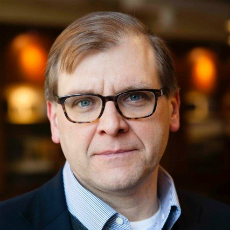Thomas Dyja is the author of The Third Coast, the One Book, One Chicago 2015 - 2016 selection. Join us as we explore the theme of "Chicago: The City That Gives" throughout the season through a variety of programs. For details on all One Book, One Chicago offerings, visit www.onebookonechicago.org.
To be honest, I had some doubts at first about the whole concept of “Chicago: The City that Gives.” Since I grew up during the reign of Mayor Daley the First, the mottos I most associated with Chicago were “The City that Works” and “City on the Make,” and I’d written The Third Coast with them in mind. Most of the men and women who built, sang, painted, wrote, and in all other ways created mid-century Chicago were also deeply concerned about selling their wares. No matter how glorious the product—whether it was Mahalia Jackson lifting her voice to Heaven or a Nichols and May bit at the Compass Theater—somehow money and success were always in the scene, if not on stage then waiting in the wings. And when fame and fortune weren’t there for searchers like Henry Darger or Sun Ra, their absence was the point. “Giving” never struck me as the story; asking “Where’s mine?” was.
But if I learned to be cynical in Chicago, I also learned to dream. So I took another slightly less jaded look at my own book, and remembered that in our city’s history, every crooked ward captain seems to find a Jane Addams to dance with, every flash of violence meets a moment of grace, and thus we remain so delicately (if we can ever use that word here) balanced in the middle of America. What I saw now was that so many of the achievements of the time weren’t just gifts to the world, but were really only possible because of something given in the first place. Sometimes it was money. Well, lots of times it was money. Herbert Greenwald made it possible for Leon Golub and Nancy Spero to paint; the Julius Rosenwald Fund helped the likes of Gordon Parks Jr. and Katherine Dunham; Marshall Field III supported Laszlo Moholy-Nagy and the New Bauhaus until industrialist Walter Paepcke took over as Moholy’s benefactor, protecting a small flame of creativity until it could burst forth as a new generation of art and design. Mies van der Rohe’s masterpiece S. R. Crown Hall on the IIT campus exists only because Henry Crown put up the money. Money is indeed a fine and necessary thing to give.
Yet money wasn’t the only way of giving in The Third Coast. Giving of all sorts stitched the city together then, for as Lewis Hyde writes, “Where there is no gift, there is no art.” Out of kindness, Muddy Waters sent a desperate guitar player named Chuck Berry to see Leonard Chess, and the dancer Toumanova brought Burr Tillstrom’s puppet to life by giving it the name “Kukla.” Eleanor Callahan stripped for her husband, the photographer Harry Callahan, not because he told her to, but because she actively chose to give herself to him. Studs Terkel and Mahalia Jackson—a man and a woman, white and black, Jewish and Christian—gave each other access to their own, very different worlds. The creative method that fuels so much in these years, improvisation, is entirely about giving, about not just affirming the reality being created around you on stage, but adding more. And if not for the selflessness of Margaret Burroughs, there would be no DuSable Museum, no South Side Community Art Center where socialite Inez Stark volunteered to teach a poetry class that included the young Gwendolyn Brooks, who would herself go on to give so much as an artist and a teacher.
Even when it was money, it wasn’t just money. It was support, validation, and most of all, power. True philanthropy doesn’t drizzle pennies onto the heads of the poor benighted ones among us. It’s not about guilt or tax deductions. The finest philanthropy empowers others to do things they already know how to do, and it asks for something in return. Giving creates relationships. “The theory of the gift,” writes Mary Freeman, “is a theory of human solidarity.” Maybe the greatest gift-giver of all during these years, then, was Saul Alinsky, whose controversial methods gave communities a voice in determining their own futures.
Certainly this is a book for boosters, full of stories about what Chicago gave to the world. But now this remarkable era in Chicago’s history, which still echoes in our lives, strikes me as a densely woven tapestry of Chicagoans giving to each other. Our pain today is the legacy of those times when we did not.



Add a comment to: Guest Blog: Thomas Dyja On Chicago: The City That Gives